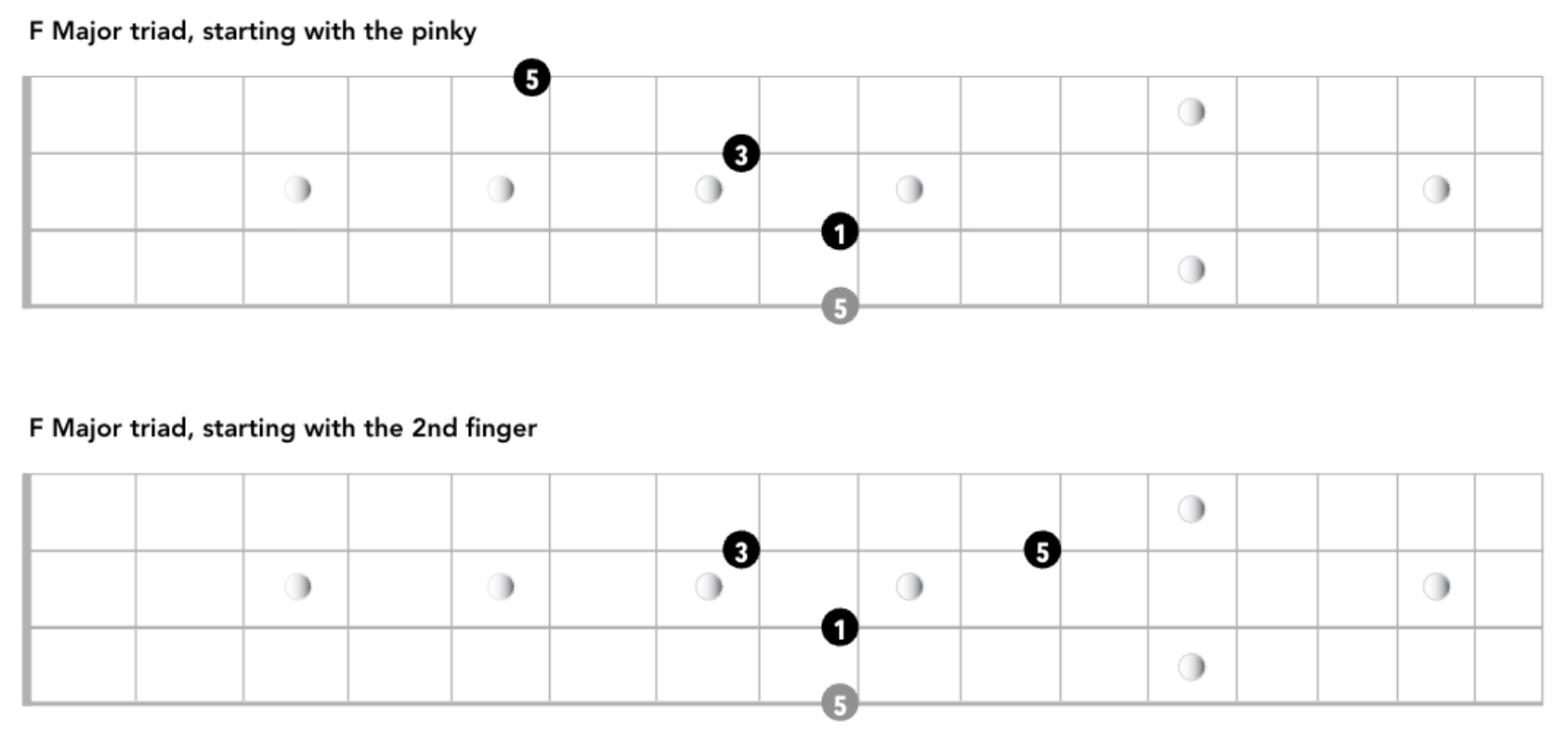Mastering Bass Fretboard Notes
Mastering bass fretboard notes doesn’t have to be a chore. Using a variation of the familiar bass line from “Under the Boardwalk,” we’ll explore two practical fingering patterns for major triads that you’ll actually use in real playing situations.
Two Essential Major Triad Patterns
Pattern 1: Three-String Pinky Lead
- Start with your pinky on the root note (E or A strings)
- Ring finger plays the third (one string higher)
- Index finger plays the fifth (one more string higher)
Pattern 2: Two-String Second Finger Lead
- Start with your second finger on the root note (on the E, A or D strings)
- Index finger plays the third (next higher string)
- Keep the fifth on the same string

Why These Patterns Matter
- These fingering patterns are essential because:
- They’re economical movements that reduce hand strain
- They position your hand for smooth transitions
- They work in any key across the fretboard
- They’re used in countless bass lines
Practice Tips for triad based grooves such as “Under the Boardwalk”
1. Start slow, focusing on clean note transitions
2. Practice both patterns in the original key
3. Move the patterns to different keys (like we do in the video)
4. Pay attention to how each pattern affects the groove’s feel
Building Fretboard Knowledge
As you practice these patterns, you’ll naturally begin to:
• Recognize note locations across the neck
• Understand the relationship between notes
• Develop muscle memory for common chord progressions
Remember, the goal isn’t just to memorize patterns but to internalize how notes relate to each other on the fretboard. These practical fingerings will serve you well in real musical situations.
What’s your preferred fingering pattern for major triads? Share your thoughts in the comments below!
